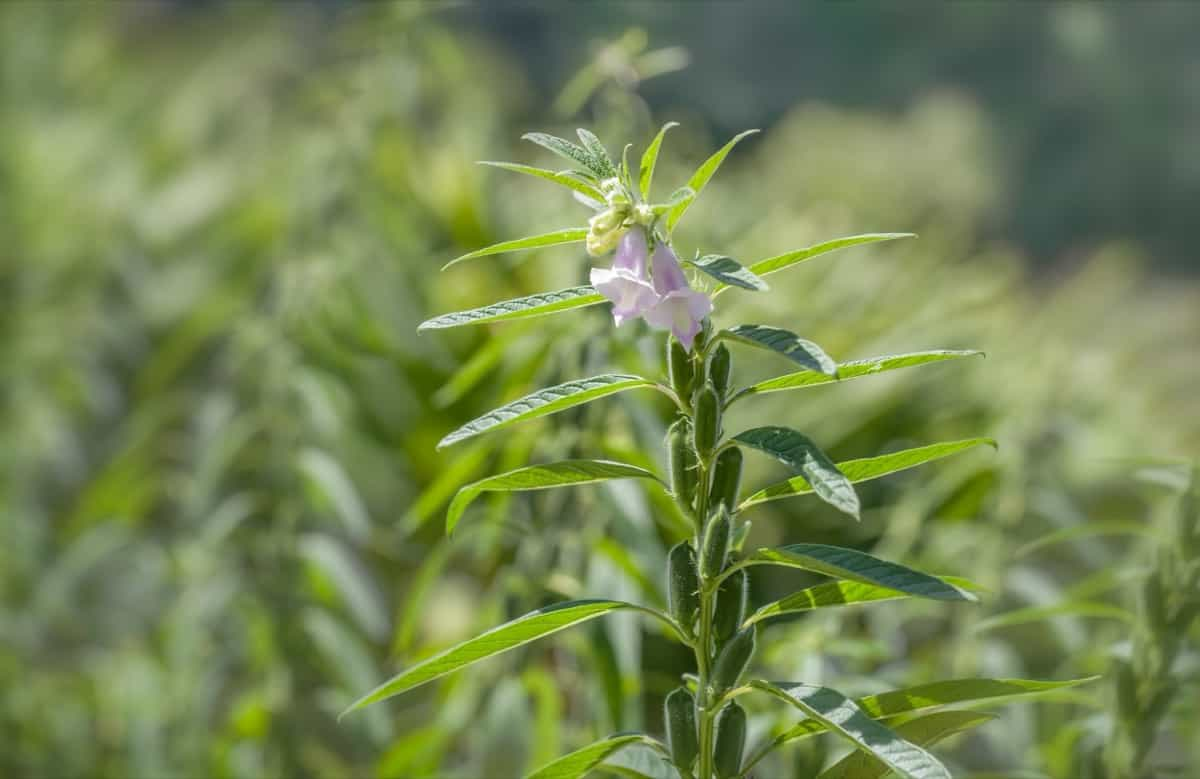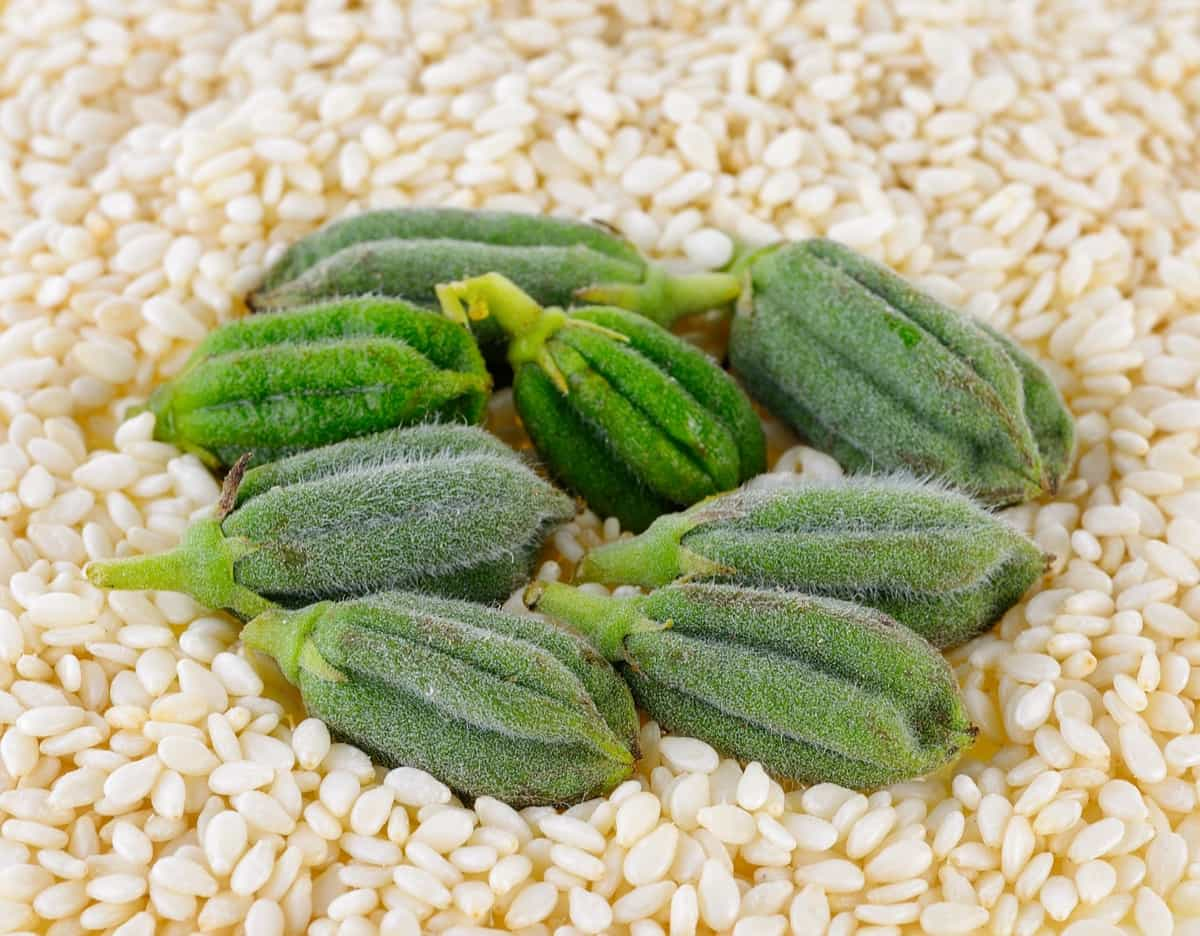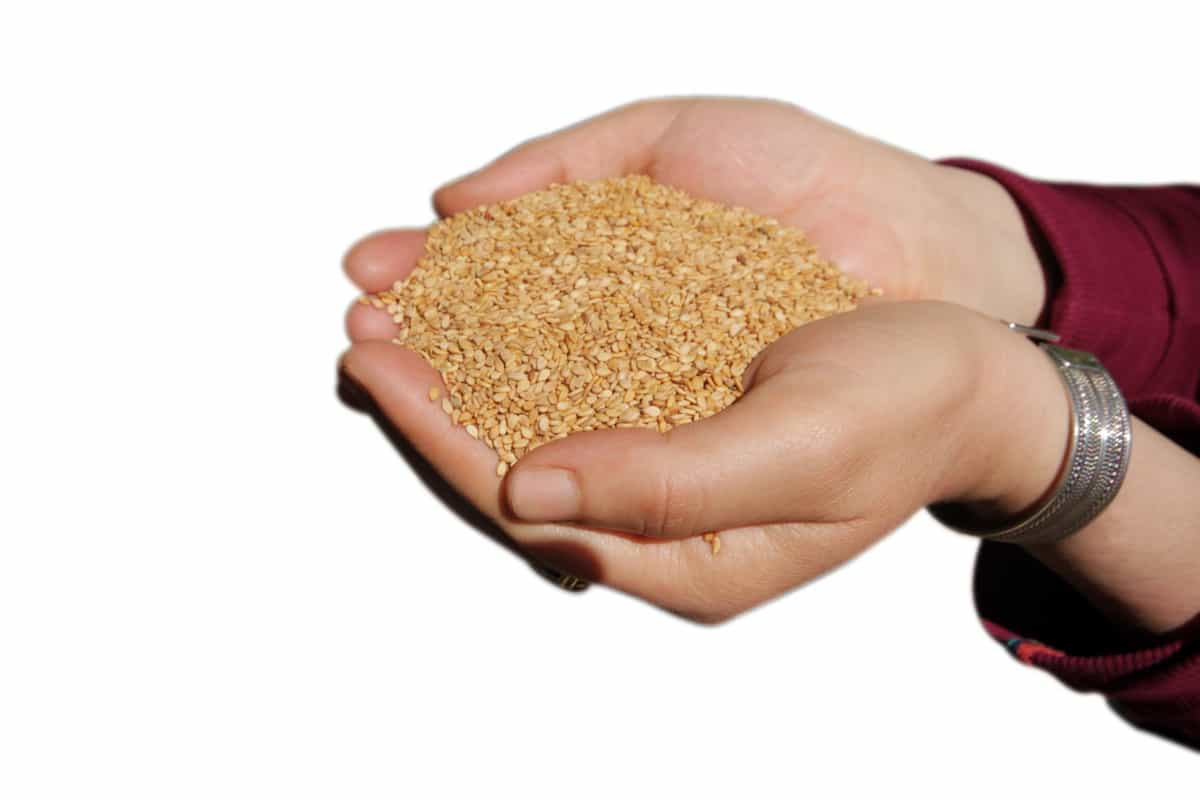Sesame is a remarkable plant cultivated for thousands of years due to its oil-rich seeds. Growing sesame plants in pots are practical for gardening enthusiasts who aim to cultivate this incredible plant at home. This article is your guide on how to grow sesame plants at home with an emphasis on pot cultivation.

We will traverse various aspects, such as choosing the right pot and soil, sesame plant spacing, sowing methods, and nurturing sesame seedlings in pots. In addition, important factors like sesame plant growing zones, sunlight, temperature requirements, watering, drainage, and appropriate fertilization recommendations will be meticulously covered.
Sesame cultivation is influenced by various factors such as temperature rainfall – with a specific amount of rainfall required for sesame in cm, and the yield outcome measured typically as sesame yield per hectare. This guide aims to provide comprehensive insights, ensuring your journey of growing sesame leaves and plants in pots is enjoyable and successful.
How to Grow Sesame Plants in Pots
Choose the Right Pot and Soil for Growing Sesame Plants
Choosing the right pot and soil is the foundation for successfully growing sesame plants in pots. The pots need to be big, so the roots have space to grow and breathe. Ensure the pot has sufficient drainage holes at the bottom to prevent water-logging. For soil, a well-draining, loamy soil rich in organic matter is ideal. It helps maintain the right moisture level and provides necessary nutrients for the plant’s growth. The soil’s pH level should be neutral to slightly acidic, enhancing the sesame cultivation process and ensuring the plant’s healthy growth.
Sowing Sesame Seeds in Pots: Step-by-Step Instructions
When sowing sesame seeds in pots, fill your selected pot with the chosen soil, leaving some space at the top. Place the sesame seeds on the soil surface, ensuring that the sesame plant spacing is adequate to prevent overcrowding as the plants grow. Put a little soil over the seeds and gently water to keep the soil damp. The spacing allows the plants to have enough room for growth and prevents competition for nutrients and light, essential factors influencing the sesame yield per hectare.
Watering and Drainage Requirements for Sesame Plants in Pots
Watering is essential in the growth cycle of the sesame plant. However, it is crucial not to over-water the plants, which could lead to root rot. The soil should be moderately moist, and excess water should drain off easily. Adequate drainage is essential to prevent water-logging, which could harm the plants. The amount of rainfall required for sesame in cm should also be considered when watering the plants, ensuring they receive the right amount for optimal growth.
In case you missed it: Frequently Asked Questions About Sesame Farming

Nurturing Sesame Seedlings in Pots
As the sesame seedlings start to grow, ensure they are well taken care of, providing them with the conditions for healthy growth. Monitor the seedlings regularly, removing any weeds or pests that may hinder their development. The young plants should be thinned if necessary, adhering to the recommended sesame plant spacing guidelines. This nurturing stage is crucial, ensuring the plants are robust and healthy, contributing positively to the sesame yield per hectare.
Sunlight and Temperature Requirements for Sesame Plants in Pots
Sunlight and temperature are crucial factors in the growth of sesame plants. Ensure that the plants receive adequate sunlight, ideally 6-8 hours of direct sunlight daily. You can put the pots in a sunny spot to make sure the sesame leaves and plants get enough sunlight. Regarding temperature, sesame plants thrive in warm temperatures, and the specific sesame plant growing zone should be considered to provide the plants with the best growing conditions.
Fertilizing Instructions for Sesame Plants in Pots: Dos and Don’ts
Fertilization is a vital aspect of sesame cultivation. For the best results, adhere to the sesame fertilizer recommendation, which involves using a balanced fertilizer rich in necessary nutrients. Fertilize the plants moderately, ensuring not to over-fertilize, as this could harm the plants. Additionally, it’s essential to follow the recommended guidelines, ensuring that the fertilization process is done correctly, promoting healthy growth, and contributing to a higher sesame yield per hectare.
Pruning and Training Instructions for Sesame Plants in Pots
Pruning and training are essential practices in managing the growth of sesame plants in pots, ensuring that they grow healthily and vigorously. Start by removing dead or diseased branches and leaves to allow room for new growth and improve air circulation around the plants. Training involves gently guiding the growth of the plants, ensuring they don’t grow too wild or chaotic.
Use soft ties to direct branches, encouraging a more organized growth pattern, which can enhance the sesame yield per hectare. These practices are not only essential for maintaining the health of the plant but also beneficial in improving the overall yield and quality of the sesame seeds produced.
In case you missed it: Sesame Production Guide: A Step-By-Step Cultivation Practices

Common Pests and Diseases in Growing Sesame Plants in Pots
Sometimes, when you grow sesame plants in pots, bugs and sickness can show up and harm the plants’ health and how much they produce. Common pests include aphids and caterpillars, which tend to attack the leaves, while diseases such as root rot and leaf spot may also pose problems.
It’s crucial to regularly monitor the plants, ensuring that any sign of pests or diseases is quickly addressed. Spacing your plants correctly and making sure they get enough fresh air can lower the chance of pests and diseases. This will help your sesame plants grow well and give a good harvest per hectare.
How to Harvest and Store Sesame Seeds from Potted Plants
Harvesting sesame seeds is rewarding after dedicating time and effort to the plants’ growth and care. The pods are ready for harvest when they turn brown and crack open. Gently remove the pods from the plants and let them dry in a warm, dry place. After drying, you can extract the seeds by gently crushing the pods.
Storing the sesame seeds properly is essential to maintain their freshness and quality. Keep the seeds in an airtight container, stored in a cool, dark place, and keep them away from moisture. Proper storage ensures that the seeds’ quality is maintained, allowing you to enjoy the fruits of your labor over time.
Frequently Asked Questions (FAQ) on Growing Sesame Plants in Pots
What is the Best Way to Plant Sesame?
The best way to plant sesame involves selecting a well-draining pot filled with nutrient-rich soil and ensuring that seeds are sown at the correct depth and spacing. Providing adequate sunlight, warmth, and water is also essential for successful germination and healthy growth of the sesame plants in pots.
What are the Steps in Sesame Processing?
Sesame processing includes harvesting the pods when they mature and then drying them in a warm and dry environment. After adequately drying the pods, they are crushed gently to release the seeds, cleaned, and stored in a cool, dark place for future use.
Is Sesame Easy to Grow?
Sesame is relatively easy to grow, providing adequate sunlight, warmth, and moisture. But, you need to pay close attention to things like giving it enough space, watering it regularly, and protecting it from bugs and sickness to make sure it grows well and produces a lot.
In case you missed it: How to Maximize Tomato Yields with Precision Farming Techniques

Which Fertilizer is Best for Sesame?
A balanced fertilizer rich in essential nutrients like nitrogen, phosphorus, and potassium is ideal for sesame. Ensuring the fertilizer has micronutrients will provide the sesame plants comprehensive nourishment, supporting their growth and enhancing seed production.
Conclusion
Growing sesame plants in pots is a fulfilling gardening activity that requires careful attention to details such as pot and soil selection, watering, and pest control. Following the comprehensive guide, one can successfully cultivate healthy sesame plants and enjoy a rewarding harvest of sesame seeds.
- Feed Your Flock for Less: Top 10 Tips to Save on Chicken Feed
- Ultimate Guide to Ossabaw Island Hog: Breeding, Raising, Diet, and Care
- Hatching Answers: The Top 10 Reasons Your Chickens Aren’t Laying Eggs
- Eggs and Economics: Breaking Down the Cost of Raising Backyard Chickens
- Defend Your Greens: Proven Methods to Keep Iguanas Out of Your Garden
- Ultimate Guide to Cinnamon Queen Chicken: A Comprehensive Guide for Beginners
- Ultimate Guide to California Tan Chicken: Breeding, Raising, Diet, Egg-Production and Care
- Ultimate Guide to Marsh Daisy Chicken: Breeding, Raising, Diet, and Care
- 10 Types of Chicken Farming Businesses You Can Start for Profits